|
Initially, back in the good old days, we had photo-sensitive chemicals which
etched images on glass plates called daguerreotypes.
Invented in 1839, it was a photographic process where a picture was
made on a silver surface sensitized to light
and developed with iodine exposed to mercury vapor.
Today this dangerous type of photo processing is history. But
this type of chemical processing would improve over
the next 150 years from black & white and
eventually to color
slides and paper images. |
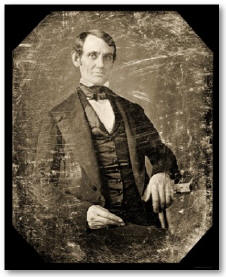 |
| A
print of a daguerreotype of Abraham Lincoln,
photographed by Nicholas H. Shepherd, a law
student in Lincoln's office from 1845 to 1847
taken in 1846. |
|
|
|
Time marches on. The Kodak
box camera had vied to replace sheet film for a more
compact size containing a roll of film allowing many
pictures to be taken before processing was required;
thus, opening up
photography to the masses. During this time, Kodak captured and
prospered greatly in the new market of photo
finishing centers where the film negative was
processed, and
transferred to photographic paper
for customer pickup. |
|
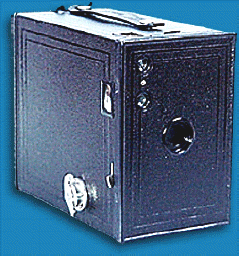 |
|
Kodak Box Brownie No 2, circa 1919 |
|
|
Later came marginally
better viewfinders
and a much smaller 35mm film format which revolutionized the photo industry
again.
With the smaller size of film and camera,
there was greater convenience and ease of use. |
|
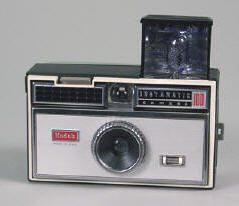 |
|
Kodak Instamatic 100 with flashbulb 1963 |
|
The introduction of
Polaroid's instant photography was the beginning of
the end of using film to take pictures. This is where
the whole idea of getting-your-pictures-now,
instantly, without waiting became a reality for many
camera enthusiast. The rest the story is now
history!
|
 |
|
Polaroid Instant Photos...
The beginning of the end of film photography
|
|
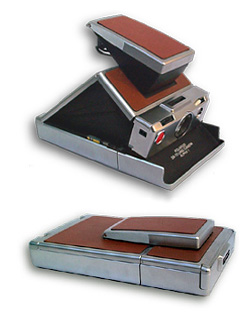 |
|
Polaroid SX70 The true instant camera |
|
|
|
|
|
Single lens reflex
cameras (SLR), circa 1963, combined the two viewers into one
called through-the-lens-viewfinder; such that, what-you-see-is-what-you-get.
This feature again made the camera easier to use with better
picture quality due to advancements in higher grain
film resolutions.
With through-the-lens viewing and
the ability to focus, interchangeable
lenses were introduced that allowed macro close-up
photography and a large assortment of telephoto lenses with
filters as add-on devices. |
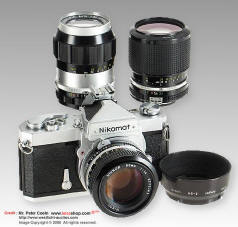 |
|
Nikomat FT interchangeable lens - 1963 |
|
|
Today, in the new
millennium, we have made a quantum leap in photo
technology history. Now, we not only can take photos
with our camera without external mountable lenses, but we
can also
can take videos! No
film, no videotape! Everything is stored on a
tiny wafer called an SD chip which can hold
100's digital photographs and hours of hi-def digital video.
In the history
of photographic technological development we have
accelerated our capabilities at an exponential rate
since 1980's due to the advent of the moon landings,
personal computers and the creation of the Internet.
Truly amazing! |
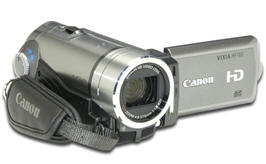 |
|
Canon HF 100 shoots hours of video and 100's of
photos on one tiny SDHC Class 6 chip - 2008 |
|
|
Photographic Power is Now in
Your Hands |
|
What should you do
with all this photographic power? Get busy
gathering all your
old 35mm slides, negatives and photographs and convert
them to
digital images before they all disappear! Right
now your photographic heritage is deteriorating due to
the ravages of time caused by heat, humidity and
improper storage. Probably many of your images have
been lost or distributed where you don't even know where
they are at. Now is the time to take charge and
make the effort to preserve you photographic heritage for
future generations to enjoy. Think about it, for
the first time in history every human being on the
planet can leave and pass on a digital photographic
legacy of their family. Protected from loss by
having the ability to make copies on storage mediums
like CD/DVD disks and
distributed among family and friends via the Internet. Even if
your copy becomes lost you can have a duplicate made
from one of the duplicates. Its cheap, easily
replicated and fun to do!
At this moment, most likely
all your photos are stuffed away in some dark corner
of a closet. Those precious memories could be
wiped out by rising water, fire, tornado or hurricane.
Can you see how having the ability to transform all
your slides, negatives and prints into digital images
can give you a piece of mind. Knowing that you
old photographs are not lost for future generations to
enjoy? Now is the time to take a closer look at
ShotCopy and what it can do for you and your
family. Its easy - its fun - a family project
the whole family can enjoy. |